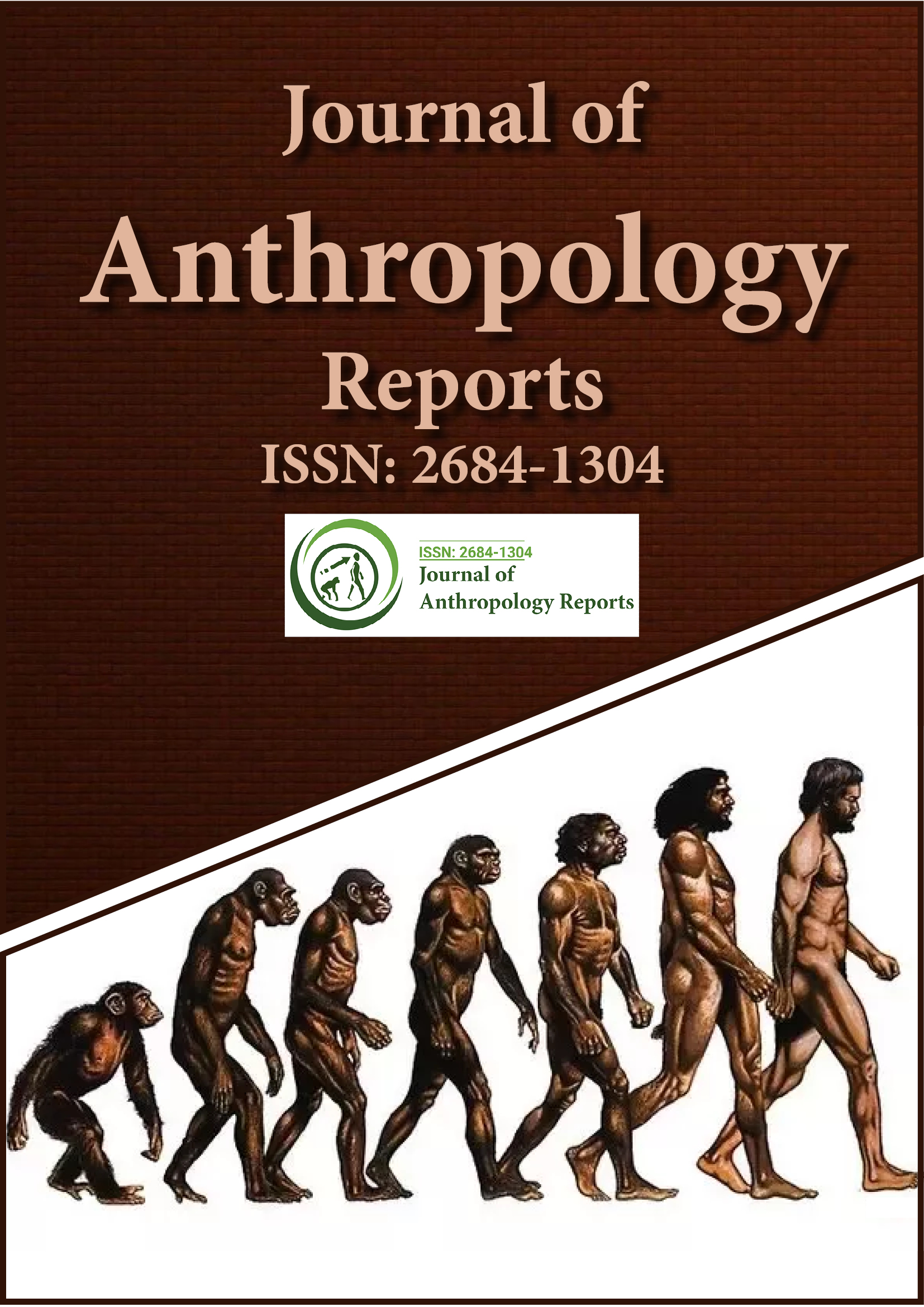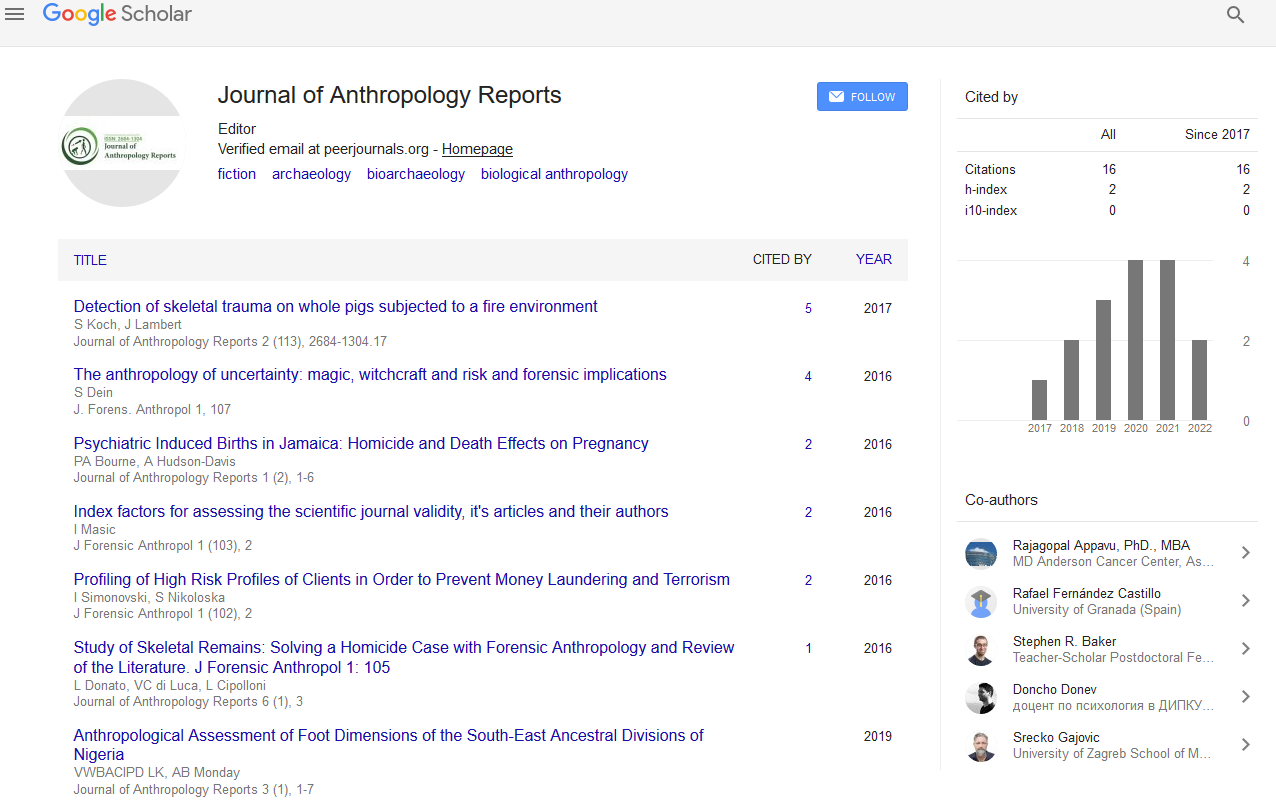Indexed In
- RefSeek
- Hamdard University
- EBSCO A-Z
Useful Links
Share This Page
Journal Flyer

Open Access Journals
- Agri and Aquaculture
- Biochemistry
- Bioinformatics & Systems Biology
- Business & Management
- Chemistry
- Clinical Sciences
- Engineering
- Food & Nutrition
- General Science
- Genetics & Molecular Biology
- Immunology & Microbiology
- Medical Sciences
- Neuroscience & Psychology
- Nursing & Health Care
- Pharmaceutical Sciences
Perspective - (2023) Volume 6, Issue 4
Factors Shaping Fossilization: Physico-Chemical Conditions and Processes
Tatiana Ellyn*Received: 28-Nov-2023, Manuscript No. JFA-24-24563; Editor assigned: 30-Nov-2023, Pre QC No. JFA-24-24563 (PQ); Reviewed: 14-Dec-2023, QC No. JFA-24-24563 (QC); Revised: 21-Dec-2023, Manuscript No. JFA-24-24563 (R); Published: 29-Dec-2023, DOI: 10.35248/2684-1304.23.6.181
Description
The veritably early traces of life are fragile and veritably rare. utmost of our substantiation comes latterly in time, and generally these fuds are pieces of shells, bones, or teeth, all of which, indeed in a living beast, were formerly incompletely made of mineral. After the organism failed, being ultimately converted into a gravestone like composition. This process is mineralization. Fossilization is the process by which the body of an organism is converted into a reactionary by petrification or by gradational addition or relief of organic material by inorganic substance. For the process of fossilization typically the organisms must have hard corridor like shell, nail, tooth, bone etc. because the soft corridor shall generally be perished. After the death of an organism, it must be incontinently buried so that it doesn't get destroyed. Since utmost of the dead organisms get deposited in water, thus, the most favourable conditions for fossilization are present in ocean.
There are, still, numerous other ways in which life-forms have left traces of their actuality. occasionally insects were trapped in tree tire, which latterly came hardened and chemically altered. Because inside the hardened amber there was little or no oxygen, the insects have remained remarkably well saved for millions of times. This intresting circumstance led author Michael Crichton to supplicate the Jurassic Park novel and stir filmland. Leaf imprints in hardened slush, or analogous prints of small organisms, or indeed the traces of dinosaur feathers are fuds.
Environmental conditions
Preservation of fuds is a fairly exceptional miracle that necessitates particular conditions. The body must be fleetly insulated from oxygenated terrain, immediate burial by fine grained sedimentary deposits, the posterior deposit of large amounts of sedimentary deposit (cargo) leading to help oxidation, the expatriation of water and to contraction. still, the stylish sediments for good preservation area the water borne sediments from the declination and corruption of aged jewels in the form of argillaceous and the wind borne material in the form of topsoil or stormy ashes has yielded fuds of terrestrial organisms. Geographic, topographic and climatic conditions also impact preservation, winds and currents in particular encourage accumulation of organic remains. also, certain modes of life are shown to advance themselves to a lesser or lower extent to fossilization. Colonising, gregarious, fixed, boring or burrowing organisms are more fluently saved than those which live in insulation or lead a wandering actuality.
Chemical conditions
Soon after death the soft corridor of organism suffer corruption by the exertion of bacteria. also, organic matter associated with the mineralized corridor like proteinaceous material of shells, bones, test, etc. frequently vanish, regarding these originally hard corridors pervious and brittle. Chemical exchanges also do between the putrefying organism and the deposition which contains it. The organic matter engaged in this process infact results from photosynthesis by phytoplankton; about a million tons of organic substances having this origin are deposited annually in the abysses in present day conditions. still, it has been known for some times that organic substance themselves have been suitable to “fossilize” in numerous sediments and preservation of the substance of the soft corridor can sometimes do. The constant refinement of styles of disquisition in chemical analysis makes it possible to reveal the preservation of an ever adding number of ingredients of living matter. Palaeobiochemistry has therefore grown up, the results of which are of interest to colourful branches of ultramodern planetology. The absence of fuds in the Pre-Cambrian conformations may have redounded from the absence of proteins in the hard corridor of the organisms.
Citation: Ellyn T (2023) Factors Shaping Fossilization: Physico-Chemical Conditions and Processes. J Anthropol Rep. 6:181.
Copyright: © 2023 Ellyn T. This is an open-access article distributed under the terms of the Creative Commons Attribution License, which permits unrestricted use, distribution, and reproduction in any medium, provided the original author and source are credited.

